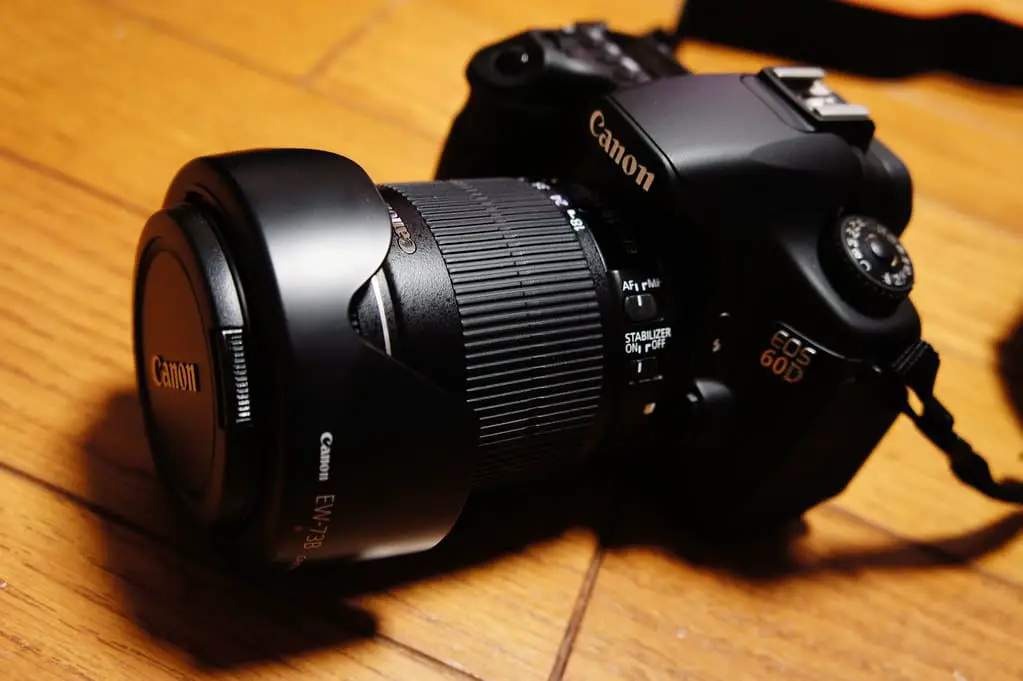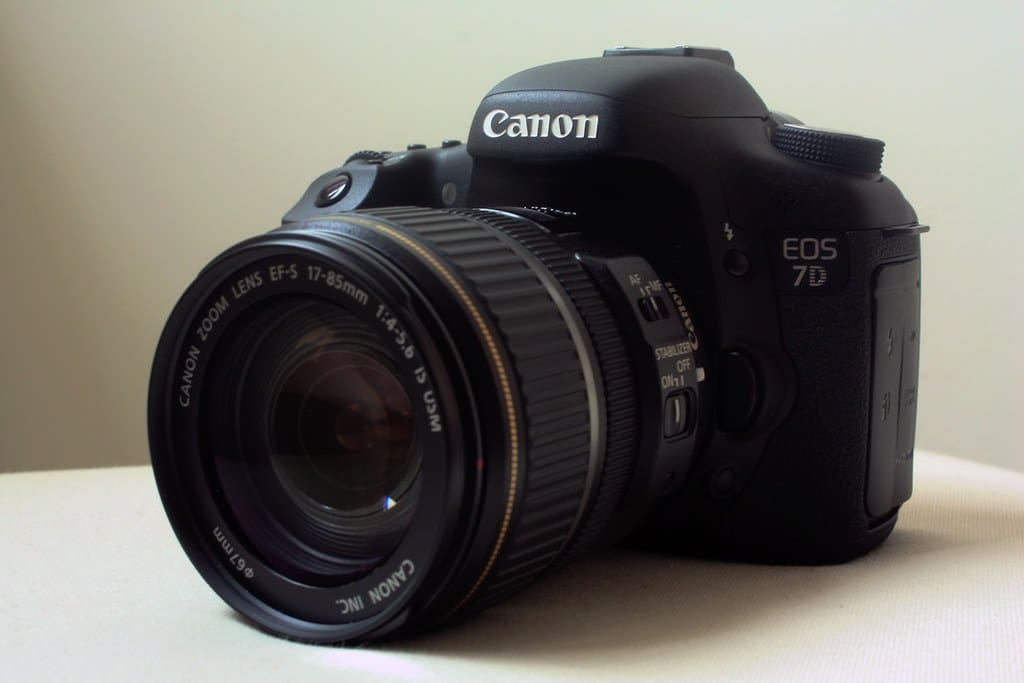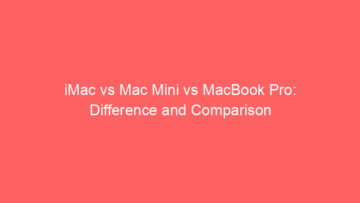Canon is one of the leading producers of EOS cameras. While many EOS cameras are available in the market, Canon EOS 60D and Canon EOS 7D are two such devices that confuse people as they are similar in almost all the specifications.
Nevertheless, a few differentiating features between them become the deciding factors.
Key Takeaways
- The EOS 60D has an 18-megapixel APS-C CMOS sensor, while the EOS 7D has an 18-megapixel APS-C CMOS sensor with Dual DIGIC 4 Image Processors.
- The EOS 60D has a swivel screen, while the EOS 7D has a fixed screen.
- The EOS 7D has better autofocus and faster continuous shooting than the EOS 60D, making it a better option for sports and action photography.
Canon EOS 60D vs Canon EOS 7D
The Canon EOS 60D and EOS 7D are two models of Canon’s DSLR cameras, with the 7D offering more advanced features such as a more durable body, higher burst rate, and better autofocus system compared to the 60D.

Canon EOS 60D is an autofocus single-lens reflex angle camera developed by Canon Incorporative. It was launched in 2010. Canon EOS 60D is the predecessor of Canon EOS 70D.
It comes with an APS-C 17.9 MP lens. Canon EOS 60D is the first Canon EOS camera to come with an articulated screen.
Canon EOS 7D is an autofocus single-lens reflex angle camera developed by Canon Incorporative. It was launched in 2009. Canon EOS 7D is the predecessor of Canon EOS 7D Mark 2. Just like Canon EOS 60D, It comes with an APS-C 17.9 MP lens.
Comparison Table
| Parameters of Comparison | Canon EOS 60D | Canon EOS 7D |
|---|---|---|
| Launched in | It was launched by Canon in 2010. | It was launched by Canon in 2009. |
| Weight | It weighs about 750 grams. | It weighs about 850 grams. |
| Display | It comes with a Fully Articulated LCD. | It comes with a fixed LCD. |
| Video FPS | It offers 5.0 FPS of continuous shooting. | It offers 8.0 FPS of continuous shooting. |
| GPS | It doesn’t offer a GPS feature. | GPS is optionally available. |
What is Canon EOS 60D?
Canon EOS 60D is an autofocus single-lens reflex angle camera developed by Canon Incorporative. It was launched in 2010. Canon EOS 60D is the predecessor of Canon EOS 70D.
It comes with an APS-C 17.9 MP lens. Canon EOS 60D is the first Canon EOS camera to come with an articulated screen.
Canon EOS 60D comes with a higher resolution screen than the EOS 7D. The articulated screen on the Canon EOS 60D stood out compared to other cameras in its segment. The new screen could be repositioned horizontally as well as vertically.
The camera is constructed using polycarbonate resin with glass fibre on aluminium chassis. The camera is also lightweight and compact.
Canon EOS 60D can shoot full HD videos with 5.0 FPS. The device has a flash coverage of an excellent 13.0 meters. Furthermore, the device can up to 1100 shots on a single full charge of battery.
Canon EOS 60D is highly recommended for vloggers and to take selfies as the camera can be rotated at various angles and allows flexible shooting positions.
Nevertheless, Canon EOS 60D lacks the availability of GPS. The location information can be embedded in the click to show where the shot was taken and in what conditions it was taken.
This feature is not available in the camera, which can be a drawback for some professionals.

| # | Preview | Product | |
|---|---|---|---|
| 1 |

| Canon EOS 60D 18 MP CMOS Digital SLR Camera Body Only (Renewed) | Check Price on Amazon |
| 2 |

| Used Canon EOS 60D DSLR Camera Body w/Battery, Charger, and Strap | Check Price on Amazon |
What is Canon EOS 7D?
Canon EOS 7D is an autofocus single-lens reflex angle camera developed by Canon Incorporative. It was launched in 2009. Canon EOS 7D is the predecessor of Canon EOS 7D Mark 2. Just like Canon EOS 60D, It comes with an APS-C 17.9 MP lens.
Unlike Canon EOS 60D, Canon EOS 7D comes with a fixed LCD screen and cannot be readjusted. The articulated screen technology was introduced later. Nevertheless, Canon EOS 7D has some pretty outstanding features.
The viewfinder technology on the camera is excellent, allowing a larger magnification area and high accuracy while capturing. Additionally, it has 19 focuses, which is much more than the competition. As a result, shots come out sharp and detailed.
The camera can shoot full HD videos with an 8.0 FPS of continuous shooting. Even though it has the same sensor as Canon EOS 60D, it seems more optimized for EOS 7D.
The dynamic range is better, has better low light performance, better-focusing capabilities, etc. The raw shots are highly accurate and close to reality.
One considerable advantage that Canon EOS7D has over other cameras in its segment is the option to have GPS functionality. However, the battery life of Canon EOS 7D can take only about 800 shots, which is noticeably less.

Main Differences Between EOS 60D and EOS 7D
- Canon EOS 60D uses SDXC cards to store data, while the 7D uses Compact Flashcards.
- Canon EOS 60D allows only 5.0 FPS of continuous shooting, whereas Canon EOS 7D allows 8.0 FPS.
- Canon EOS 60D doesn’t offer GPS functionality, whereas Canon EOS 7D does.
- Canon EOS 60D has a fully articulated screen, whereas Canon EOS 7D has a fixed screen.
- Canon EOS 60D has a far better battery life than Canon EOS 7D and can take 1100 shots on a single charge. On the other hand, Canon EOS 7D can take only about 800 shots.








